What’s in Your Bento Box?
BENTO BOXES ARE LUNCH BOXES, much like the type of box you might take your lunch to school in.
Bento boxes are made out of plastic and come in many different shapes, like squares, circles, or ovals. The box usually has many smaller sections inside that keep different foods apart.
In Japan, children bring their food to school in these boxes. In America, you will often see a type of bento box at Japanese restaurants and take-out bento boxes are available in grocery stores selling Japanese food.
Typical bento box fare includes rice, meat, salad, and pickles. Long ago in Japan, lunches were wrapped in oak, magnolia, or bamboo leaves. Later, wooden boxes were used.
Many designer bento boxes, as well as boxes decorated with popular cartoon characters, are sold today.
What’s in YOUR Bento Box?
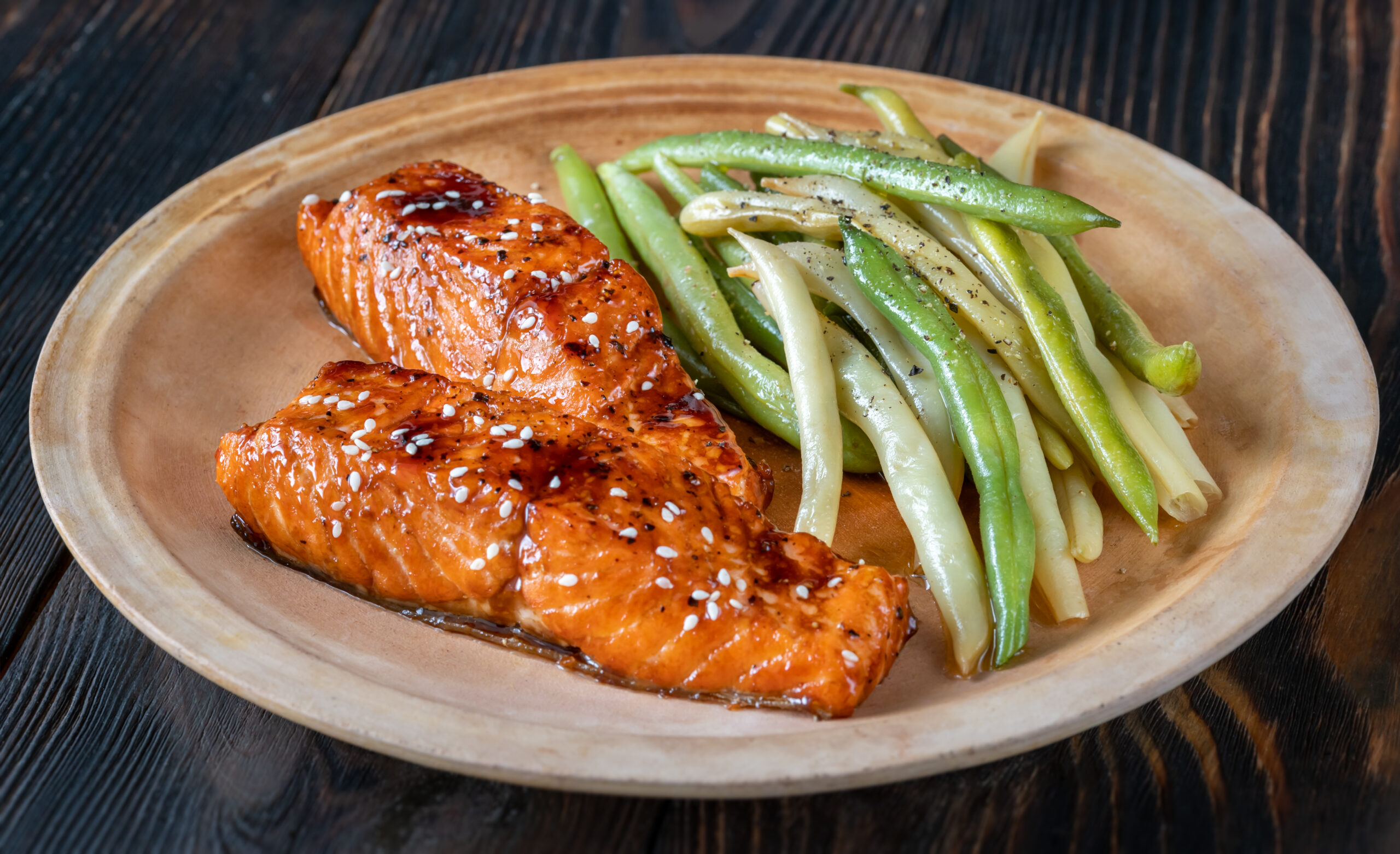
Teriyaki salmon with beans.
Mmmm!
I see your caregiver packed some teriyaki (marinated chicken, fish, or beef) in one of your bento box compartments! Sometimes she includes a few onigiri (sticky rice ball) wrapped inside a sheet of nori (dried seaweed) with the teriyaki pieces.
SUMMER FOOD
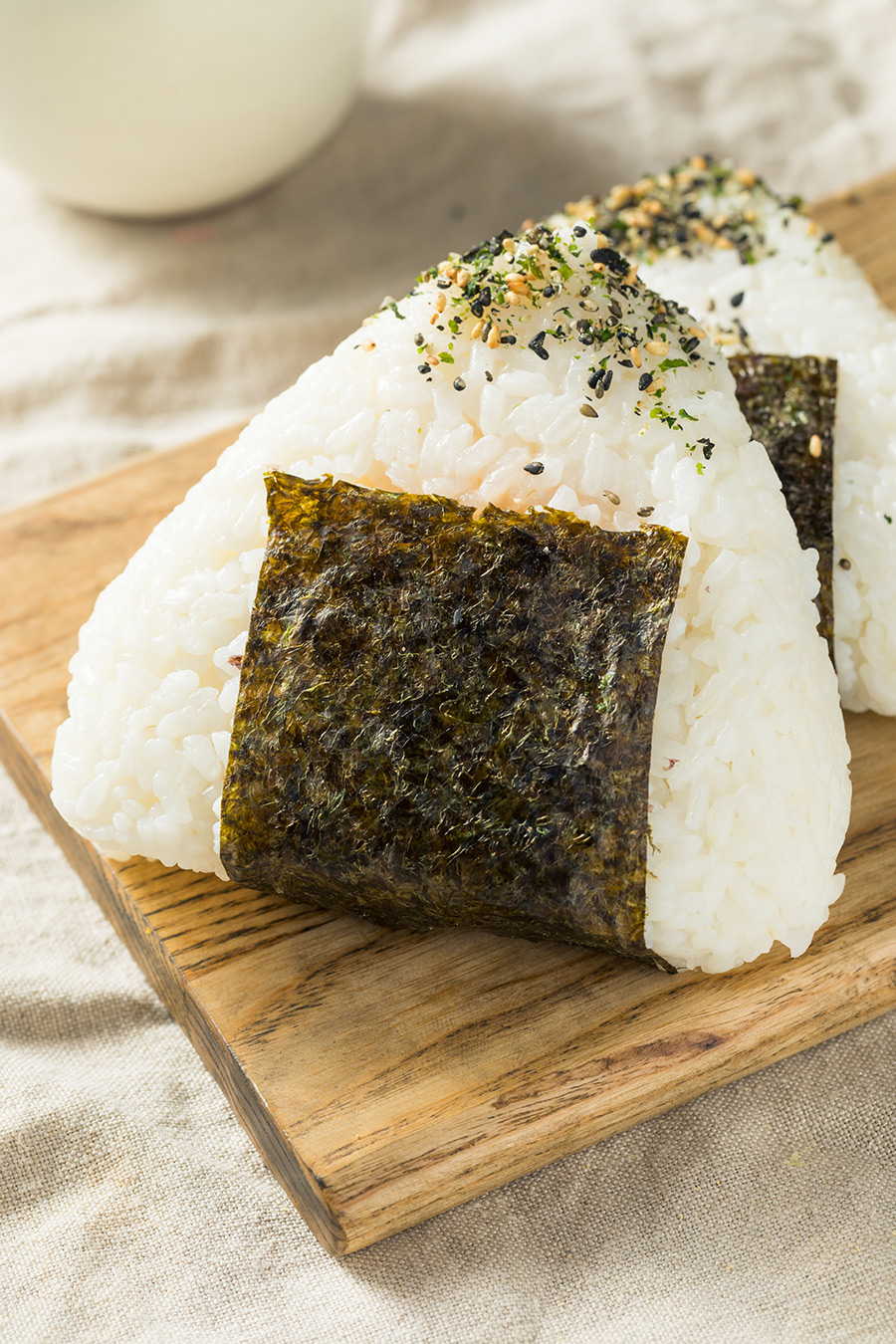
Onigiri (rice balls).
Take a closer look at some of these treats that are good in summer!
For many Japanese Americans, summer
(natsu in Japanese) is a time for fun get-togethers and lots of food.
There are many light and yummy foods in Japanese cooking that Japanese Americans have added into their traditional Fourth of July picnics and backyard barbecues.
Some of these include:
- Teriyaki: Marinated and broiled beef, fish, or chicken.
- Onigiri: Rice balls covered with dried seaweed or sesame seeds, and often filled with Japanese pickled plums (ume) or fish.
- Somen: Cold noodles in a light sauce made of soup stock, sweet rice vinegar, soy sauce, and sugar, often served with grated ginger and green onions.
- Japanese eggplants (nasu): Smaller than western eggplants and shaped differently, they can be boiled, grilled, steamed, simmered, fried, or pickled.
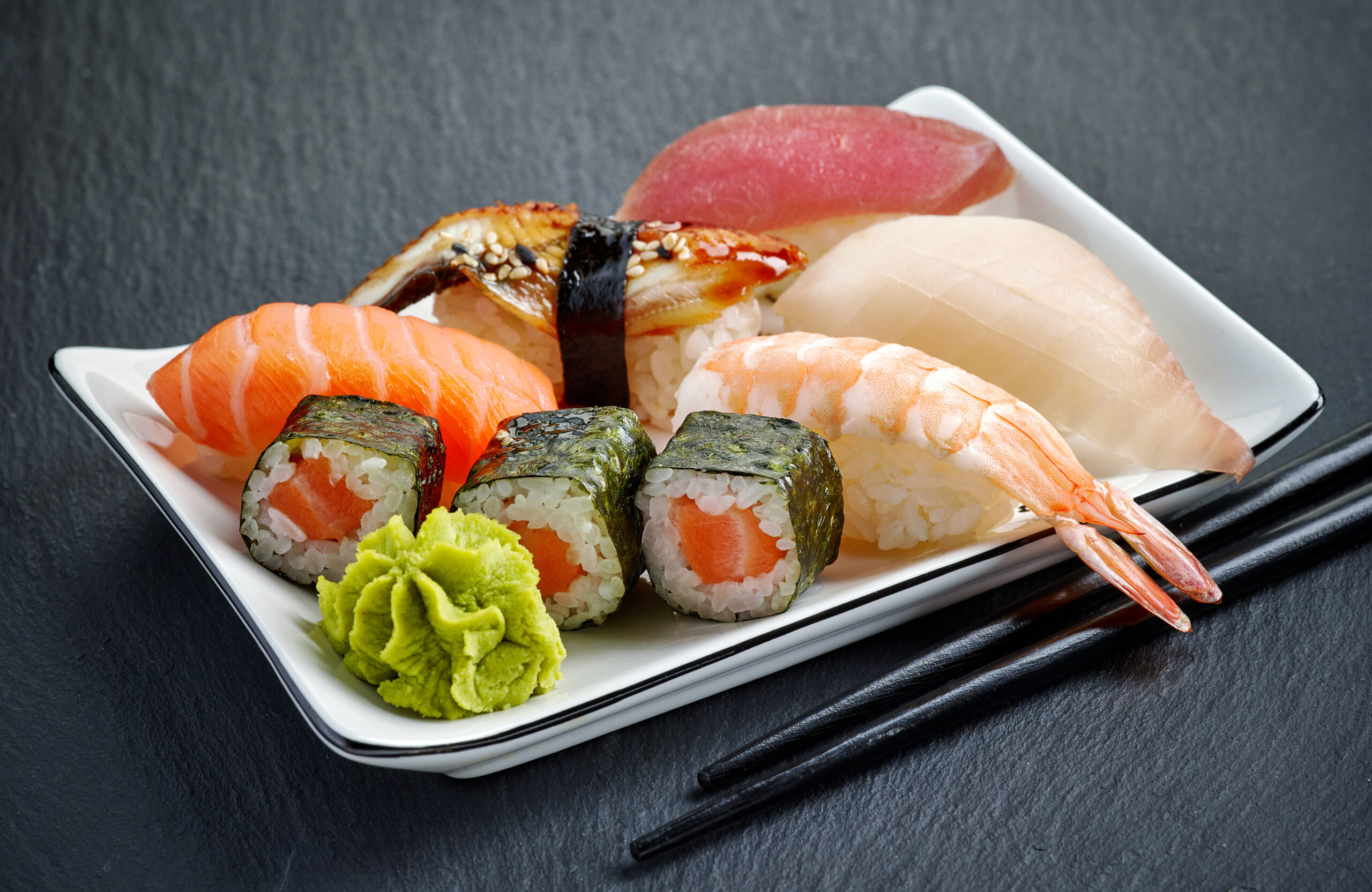
There are many types of sushi.
Maybe you’ll find some different kinds of sushi (vinegared rice with fish or vegetable topping or filling) for lunch,
perhaps with sashimi (raw fish) and a little bit of wasabi (green spicy horseradish). Easy to eat with your o-hashi (chopsticks)!
SUSHI

A wooden tray of nigiri and sushi rolls with
shoyu (soy sauce) and O-hashi (chopsticks).
Once only eaten at special occasions in Japan, sushi
(pronounced sue-she) can now be found all over the world.
In America people used to be squeamish about eating raw fish, but now they love to sit down at the counter of their local sushi bar.
Sushi began as a way of saving fish so it could be eaten later. The fish was salted and put on rice seasoned with vinegar. At first, the rice was thrown away, but the Japanese began to eat the rice with the fish and then started adding other ingredients.

Maki sushi.

A bowl of mostly sashimi (raw fish).
Sushi comes in many forms:
- Nigiri sushi (nigirizushi): hand-shaped and topped with some type of fish or seafood.
- Oshi sushi (oshizushi): pressed in molds.
- Maki sushi (makizushi): rolled and filled with different ingredients.
- Chirashi sushi (chirashizushi): ingredients are placed on top of a bowl of rice.
At some restaurants, sushi is even served on a moving belt where you get to pick out what you want as it moves by. Some sushi chefs show off by arranging and rolling the sushi filling to create works of art.
If you’re not sure you’ll enjoy raw fish, start with sushi that has ingredients you know—like cucumbers or pickles—and build from there. Just watching the sushi chef prepare your meal can be a treat all its own!
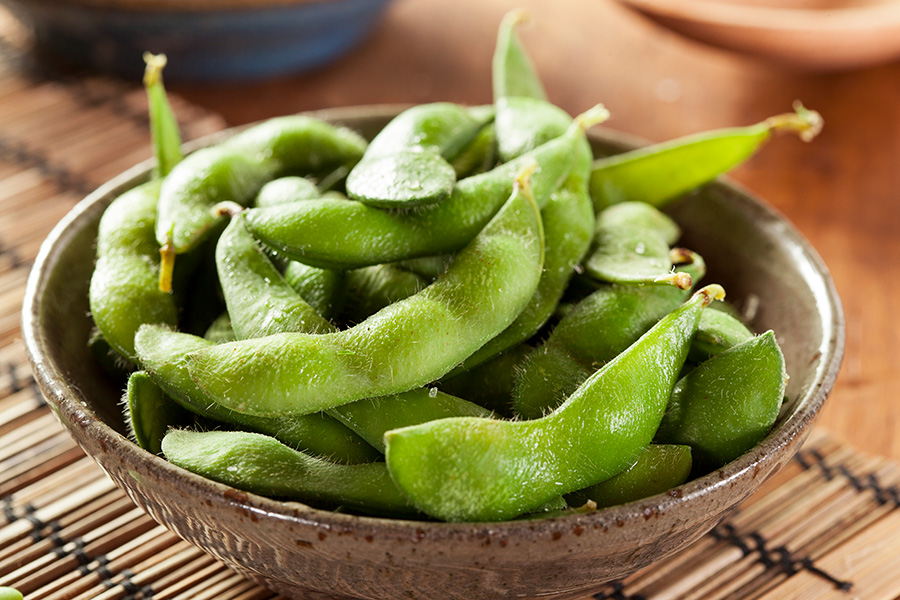
Edamame (soy beans).
Wow! Your caregiver packed some edamame (green soybeans) as a snack!
They also sliced some kyuri (Japanese cucumber) and arranged them very prettily in the box for you.
JAPANESE VEGETABLES
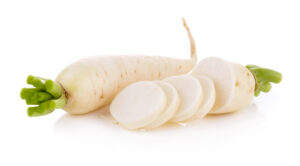
Daikon radishes.
Fresh vegetables are used a lot in Japanese cooking.
Even today, the Japanese eat only a small amount of beef and pork.
In addition to vegetables you may already know—like carrots and spinach—Japanese cooking includes a number of lesser-known but really tasty vegetables.
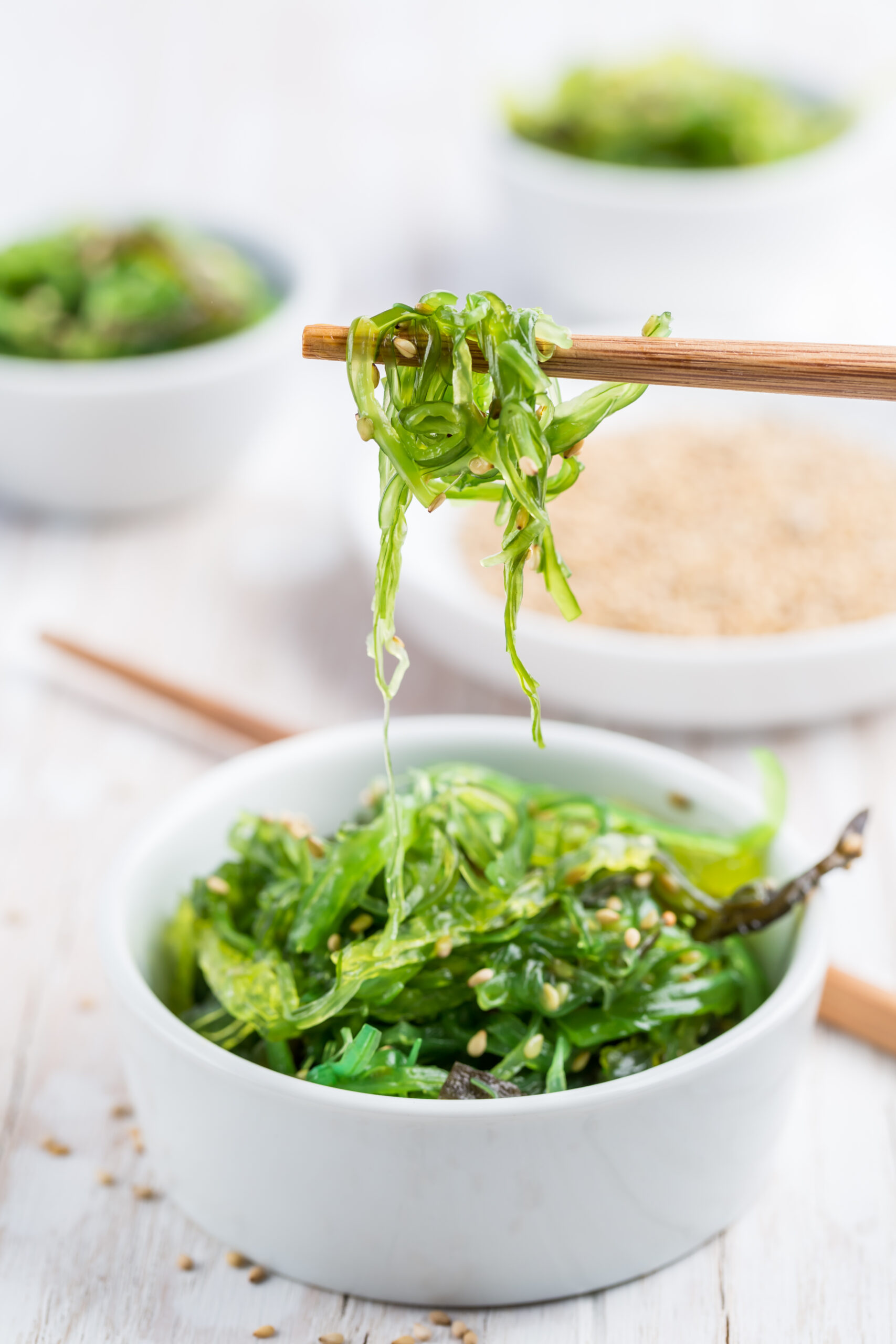
Wakame (seaweed) salad.
Some examples include:
- Daikon: long white radish.
- Edamame: green soybeans, often eaten as a snack or appetizer.
- Gobo: a type of long root that has a crunchy texture.
- Kabocha: “Japanese pumpkin,” a type of small squash with a dark green skin.
- Renkon: lotus root, a potato-like vegetable known for its pretty shape when cut.
- Shiitake: black mushroom.
- Shiso: leaf from the perilla plant, the “Japanese basil.”
- Takenoko: bamboo shoots.
- Wakame: mild, thin, green seaweed, used in soups or salads.
Many of these vegetables can be found in grocery stores selling Asian foods. Or you can try growing them at home in your garden.

Kagami mochi.
For the New Year, your caregiver might pack some lucky Oshogatsu foods
like mochi (pounded rice cake), shrimp, and ozoni (soup with mochi) in your lunch!!

Japanese matcha (green tea) mochi and regular mochi.
Making Mochi
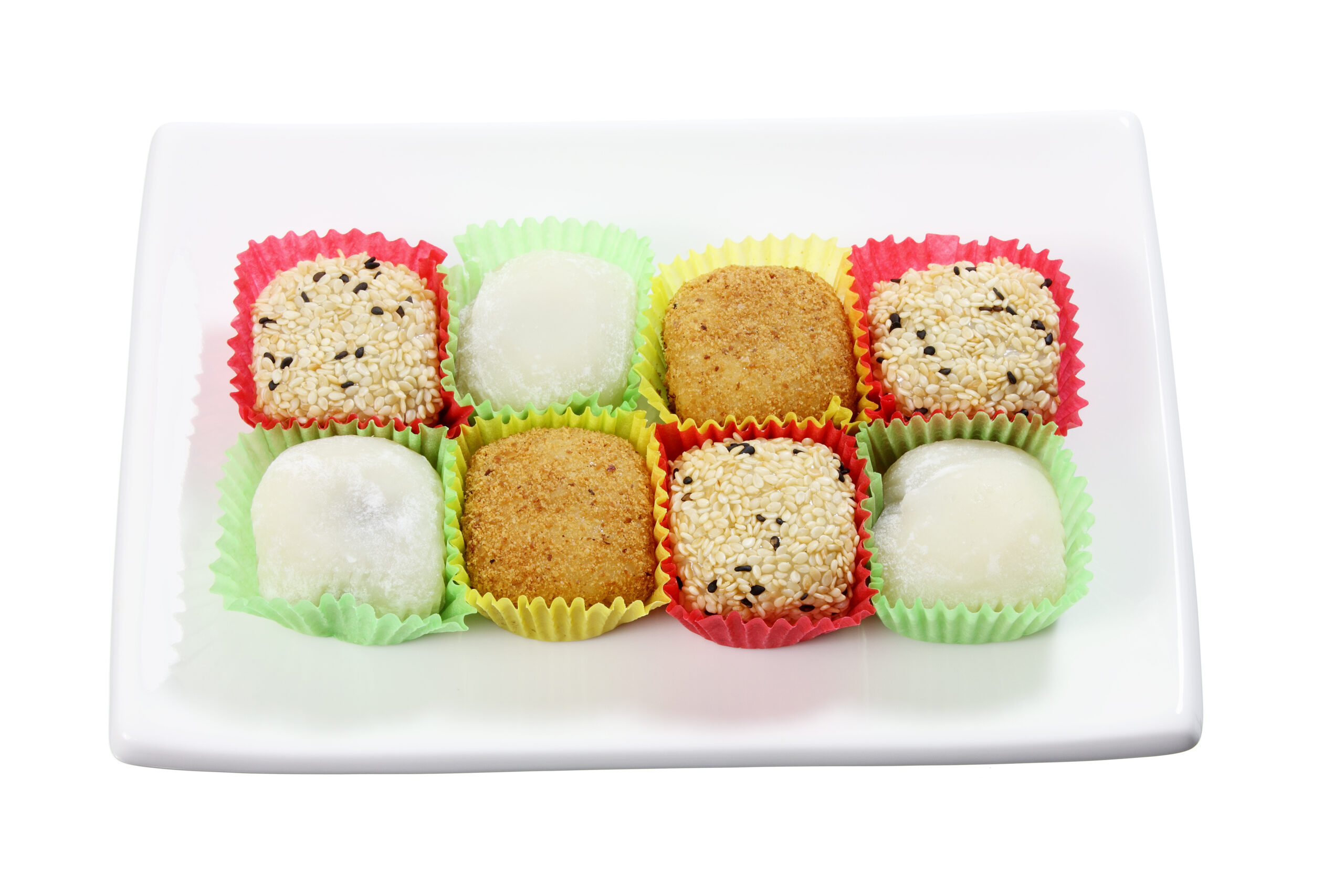
Mochi (pounded rice).
Here’s a recipe for mochi you can make at home!
In many Japanese American homes and communities, a yearly custom is the mochitsuki
(pronounced mo-chee-tsu-key)—the pounding of mochi, or rice cakes, which is an important part of the Oshogatsu or New Year’s celebration.
Mochitsuki begins with the washing and soaking of the mochigome (sweet rice). The next morning the rice is ready to be steamed in the seiro—wooden steaming frames. Three or four frames are stacked on top of each other and placed over a kettle of boiling water.
After the rice is cooked, it is dumped into a large bowl. The hot rice is then hit with a wooden mallet until it is a smooth and shiny blob. Someone quickly puts his or her hand into the bowl and turns the rice before the next pound of the mallet.
The smooth and gooey stuff—now called mochi—is put on a table. A person pinches off small portions of the steaming hot mochi for others, who quickly form them into flattened round shapes with their hands. The mochi is then set aside to cool and is ready to eat.
THE JAPANESE NEW YEAR

A nice Oshogatsu meal presentation.
In Japan, the most important holiday is Oshogatsu, the celebration of the New Year.
Oshogatsu is spent with family.
The New Year’s holiday lasts for a week of December 28 through January 6. For Japanese Americans, this time of the year is full of rich traditions.

Cleaning the house!
Osoji (“cleaning”) is part of the Oshogatsu ritual…
a Japanese equivalent of “spring cleaning.” This happens at the end of the year because the Japanese believe this is a good time to make a fresh start for the coming months.
Once the house is clean, cooking begins for the traditional New Year’s meals. On New Year’s Eve, soba noodles are served just before midnight and eaten as the New Year arrives.
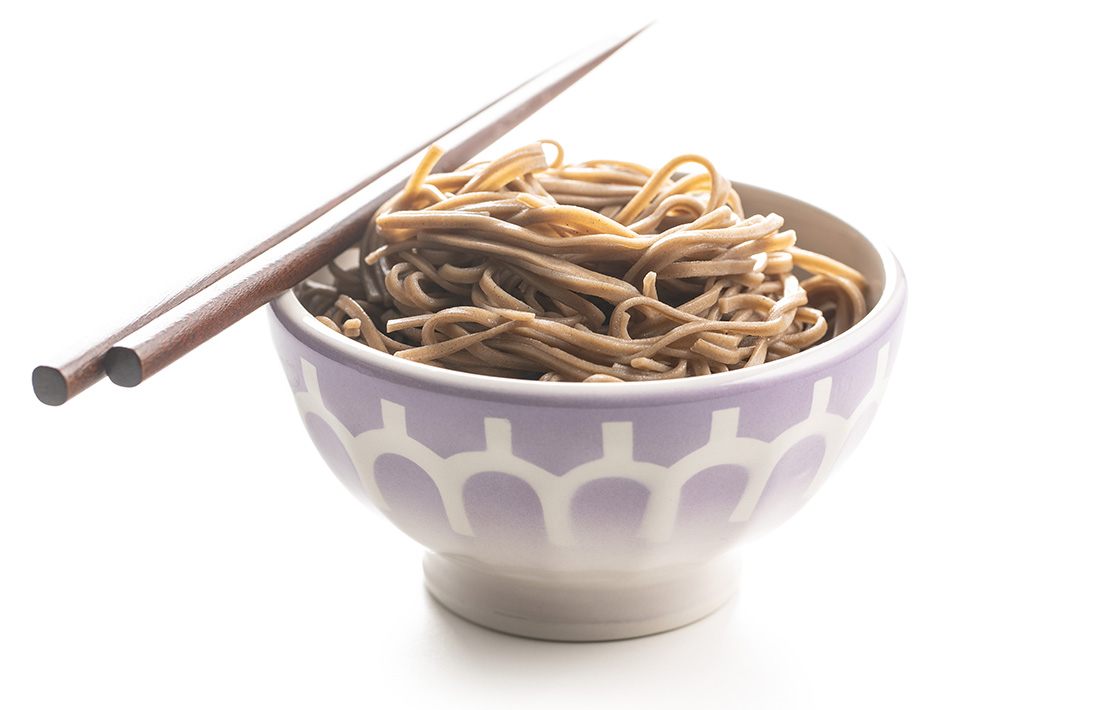
Soba noodles.
Cooked soba noodles.
On New Year’s Day, two traditional types of Japanese meals known as O-sechi ryori and O-zoni are served. O-sechi ryori has foods likes shrimp, seaweed, eggs, chestnut, and pork, all of which are considered to be good luck.
O-zoni is a mochi soup cooked with vegetables and other foods. The ingredients may change depending on a family’s recipe, but mochi (rice cake) is always there. O-zoni is the first meal of the new year, because it ensures a happy year to come.

